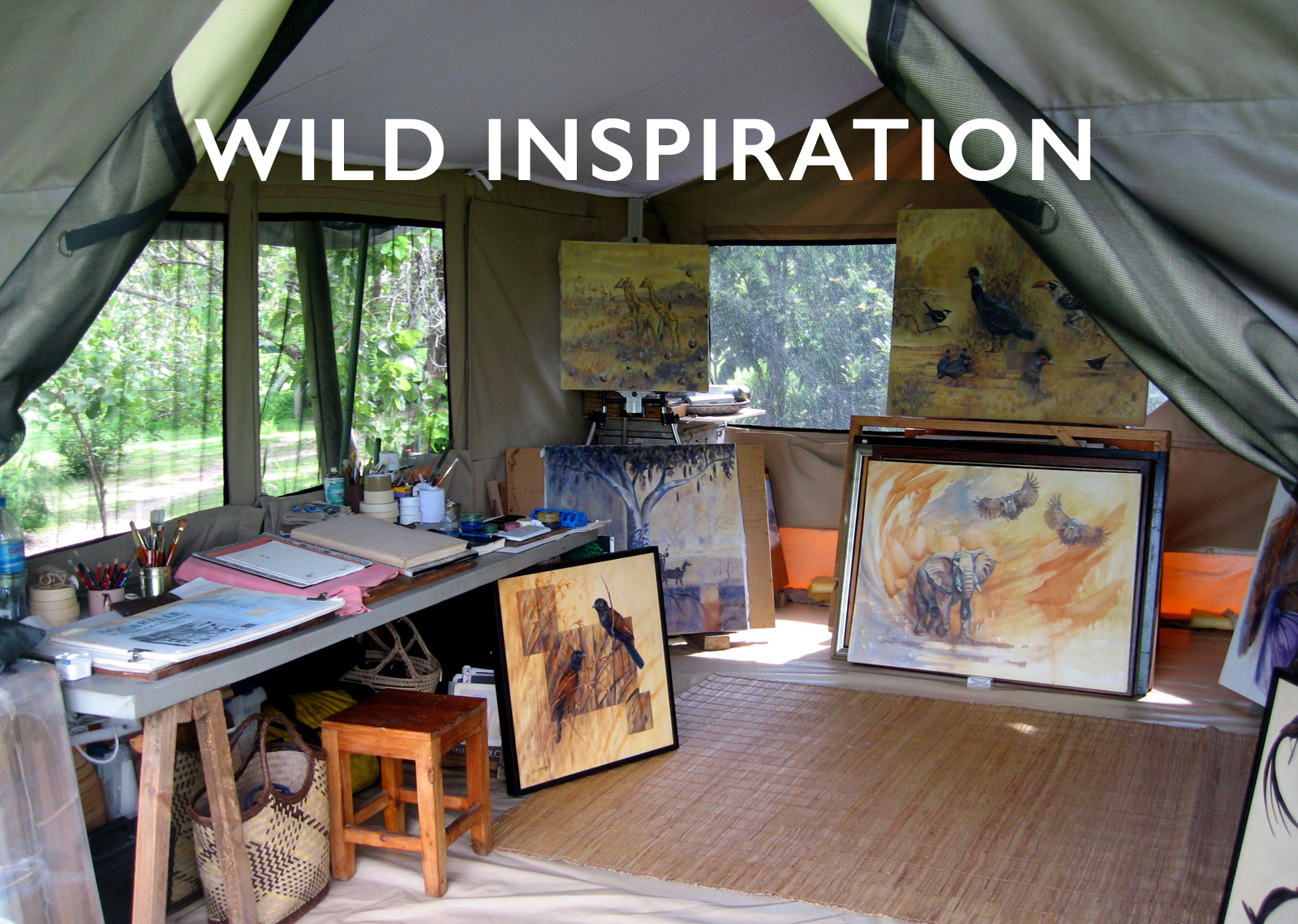
WE ASKED RUAHA'S RESIDENT ARTIST OF 11 YEARS ABOUT LIFE AND INSPIRATION IN TANZANIA'S WILDEST FRONTIER


It is very hard to capture the true essence of life in Ruaha in words or paint. I am merely a silent observer of a tiny, tiny portion of what goes on, and has gone on, for centuries.

I distinctly remember when I was 12; I was on a game drive, and I vowed that when I grew up, I would make my life in the bush, and the best thing ever would be to live in Ruaha. In 1994, when I was 34, I found myself driving back to Ruaha. I was excited and curious to see how I would find it. It did not disappoint. Ruaha has been untouched since the beginning of time. It is quite honestly one of the finest wilderness areas on earth. That’s why I stayed, and I have remained here for the past 11 years.
You asked what the challenges are, but I am so used to living remotely that I don’t find it challenging at all; to me, it is ‘normal life.’ I suppose it does require you to be pretty organized, such as when you go on a shopping trip every six weeks. You have to eat fresh stuff in a sequence of what goes off first and then what keeps last – cabbage and squash keep for a long time, but soft fruit does not.
People often ask me what I do if I am sick. Most of the time, it is nothing serious I just spend a few days being quiet. However, on a couple of occasions, I have had to be flown out with a doctor, but it all worked out. The main thing is to be organized and know your mental and physical limitations.
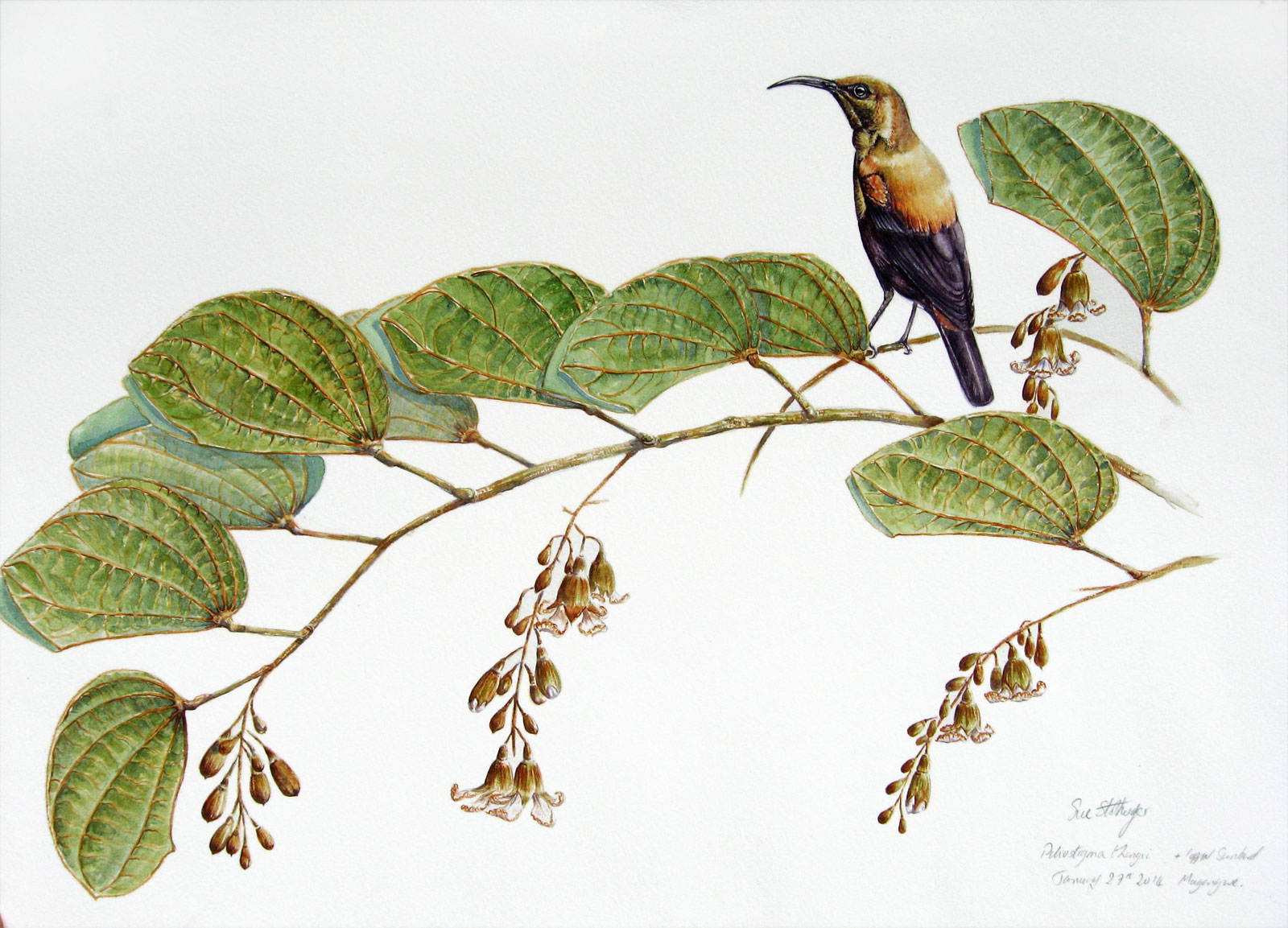
A typical day? I am a very early riser, so I potter about in my pyjamas, before the sun is up, taking in the sounds. I fill up the water baths for the birds and put out a bit of seed for them. My partner and fellow artist, Rob, and I have separate camps, so at about 7.30, he comes over for breakfast: fruit, porridge, toast, tea and coffee. We sit on my verandah for all meals, often joined by birds and small beasts, like squirrels during the day and genets at night. We are usually in our respective studios or out sketching by 8.30 am.
In the evening, I heat up water on the stove in a kettle for a shower – the old-style bucket shower hauled up on a pulley. We eat around 7.30 pm by candlelight with the stars and moon shining above. Even simple things like going down to the river each day to collect water are magical moments for inspiration: colour on the water, a fish eagle or a dragonfly landing on a rock.
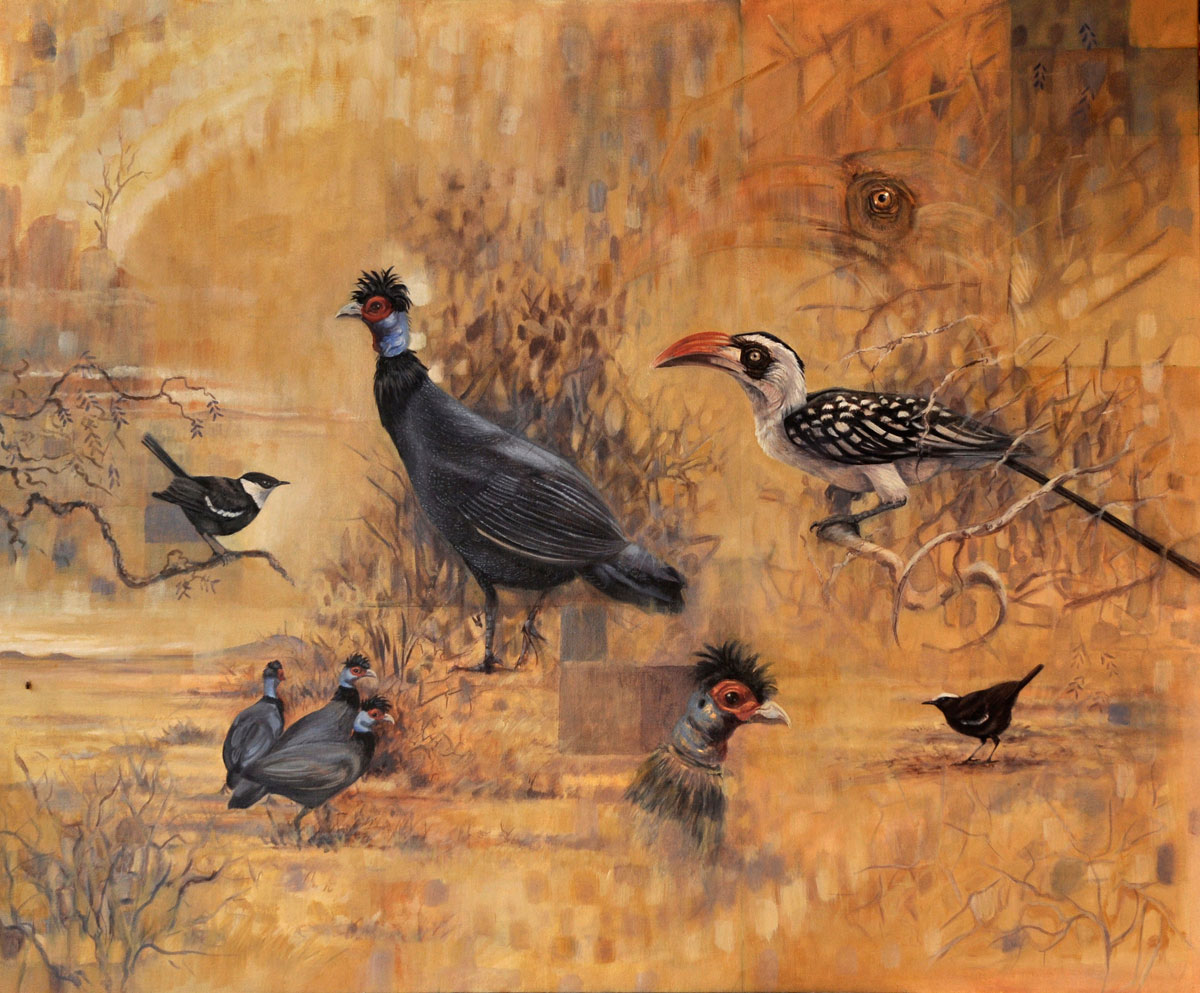
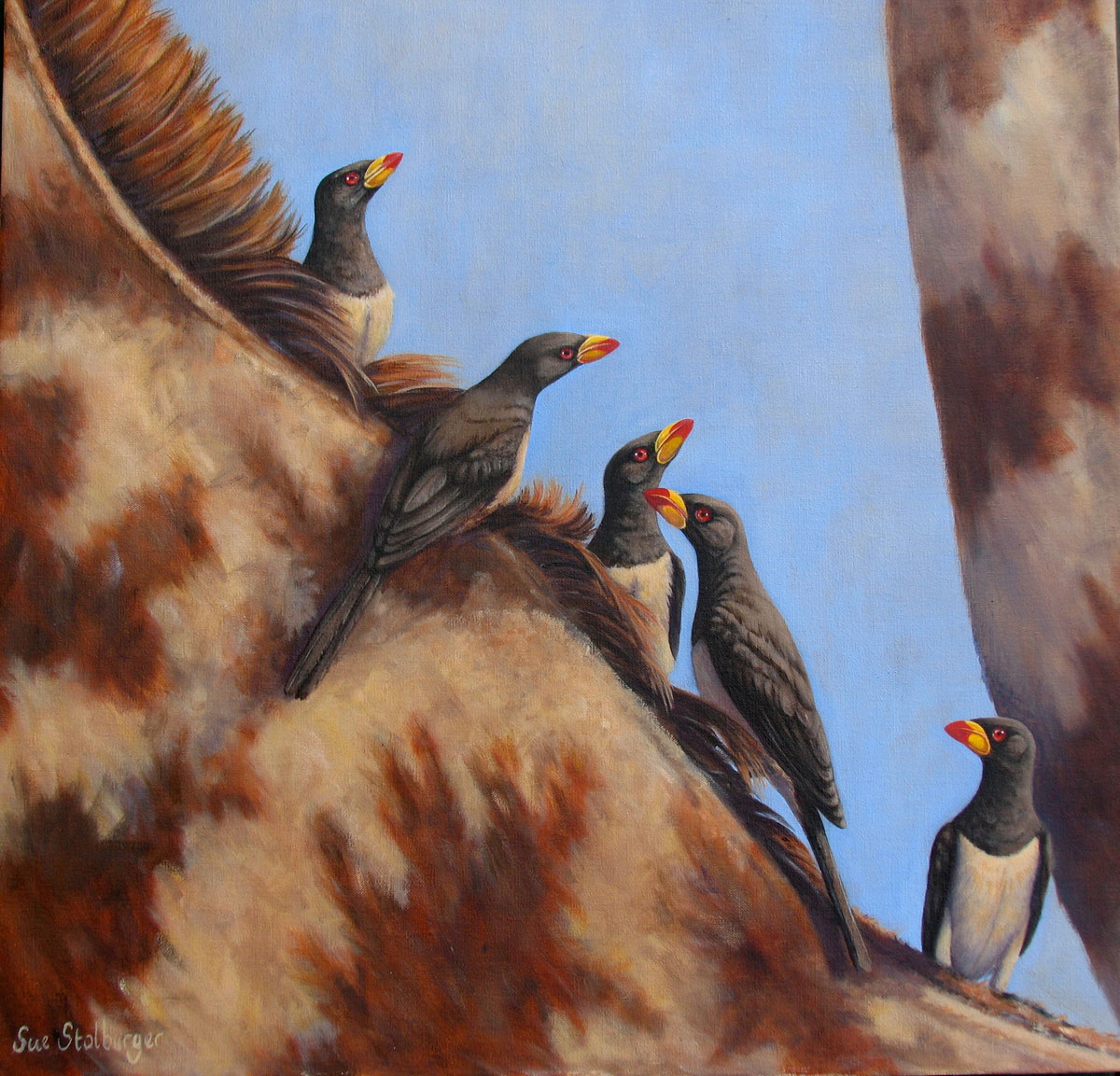 What has always fascinated me is how nature comes up with the most marvellous combinations of colour. It is these combinations of colour and design that spark many of my pictures. I have always loved painting birds; their patterns and colours are superb.
What has always fascinated me is how nature comes up with the most marvellous combinations of colour. It is these combinations of colour and design that spark many of my pictures. I have always loved painting birds; their patterns and colours are superb.
When I see something that grabs my attention, be it a sky, an animal, a person or just a combination of colours that I find interesting, I will sketch this in a journal with watercolours and keep it for future reference. Or I may be researching an animal or bird with a definite purpose, in which case I will pay particular attention to all the colours and details and spend a week or more making notes and sketches.
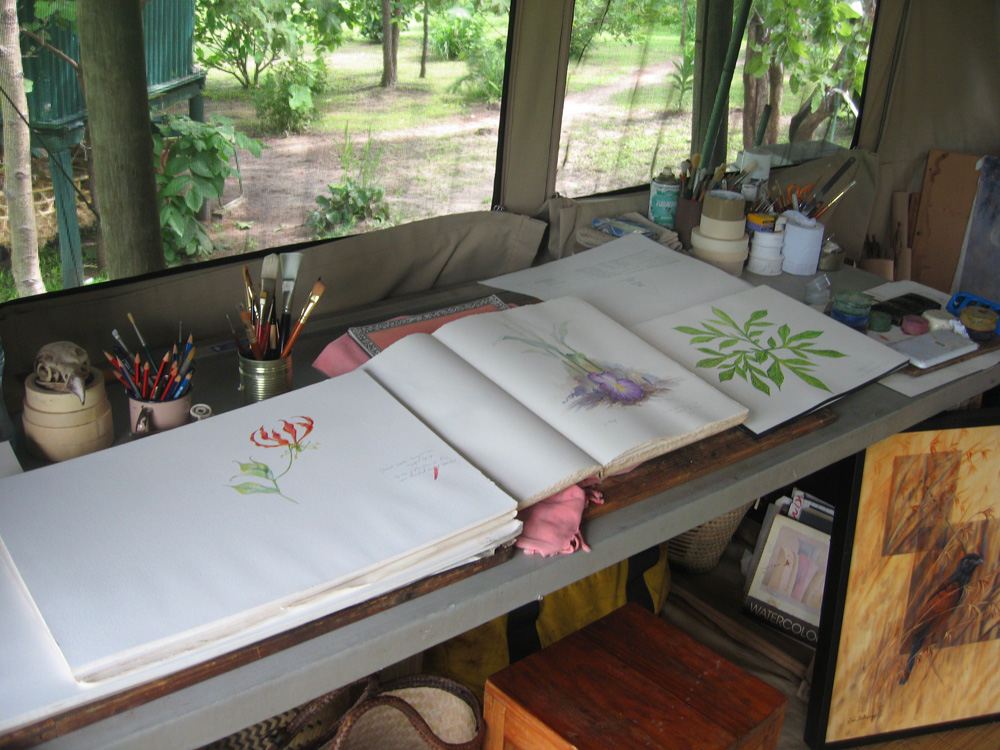 I paint because it is what I love to do. I paint what inspires me or challenges me. It is very hard to catch that same spontaneous ‘inspiration’ from someone else’s idea. In the few commissions I have done, I am constantly wondering: ‘is this what they had in mind?’ I concluded that it would be unwise to accept commissions as, although one might be tempted to follow this route as it brings in money, in the end, it will be detrimental to one’s standard of work and one’s own inspiration. I can afford not to be controlled by fear of not having enough money because I know tomorrow will take care of itself.
I paint because it is what I love to do. I paint what inspires me or challenges me. It is very hard to catch that same spontaneous ‘inspiration’ from someone else’s idea. In the few commissions I have done, I am constantly wondering: ‘is this what they had in mind?’ I concluded that it would be unwise to accept commissions as, although one might be tempted to follow this route as it brings in money, in the end, it will be detrimental to one’s standard of work and one’s own inspiration. I can afford not to be controlled by fear of not having enough money because I know tomorrow will take care of itself.
I have several things that are firing me up at the moment: I am working on a ‘coffee table’ type book that will be filled with paintings of the Miombo woodlands, a pristine yet underappreciated area of Ruaha. In addition, I am looking to create a flower and tree guide on the plants of Miombo.
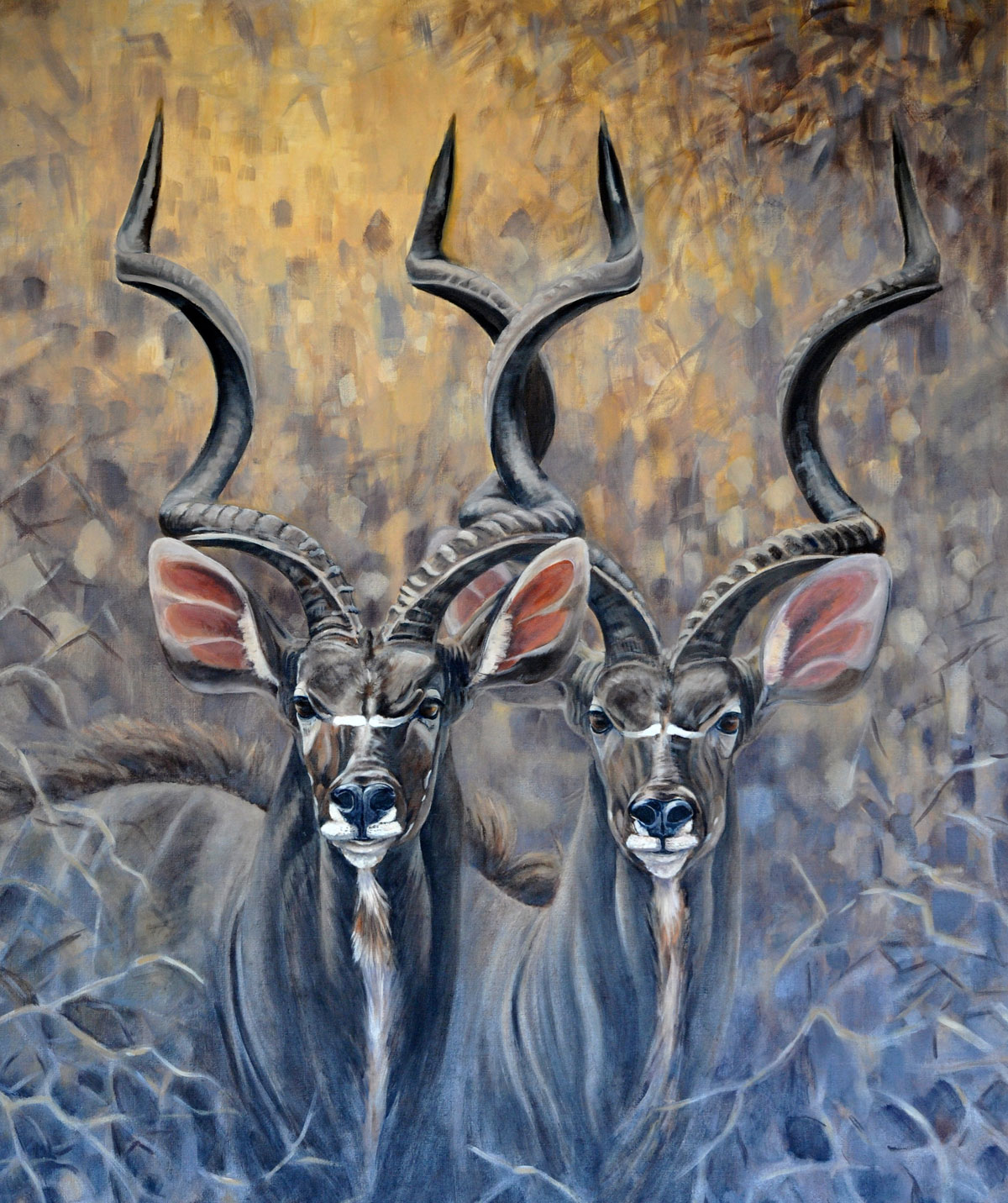
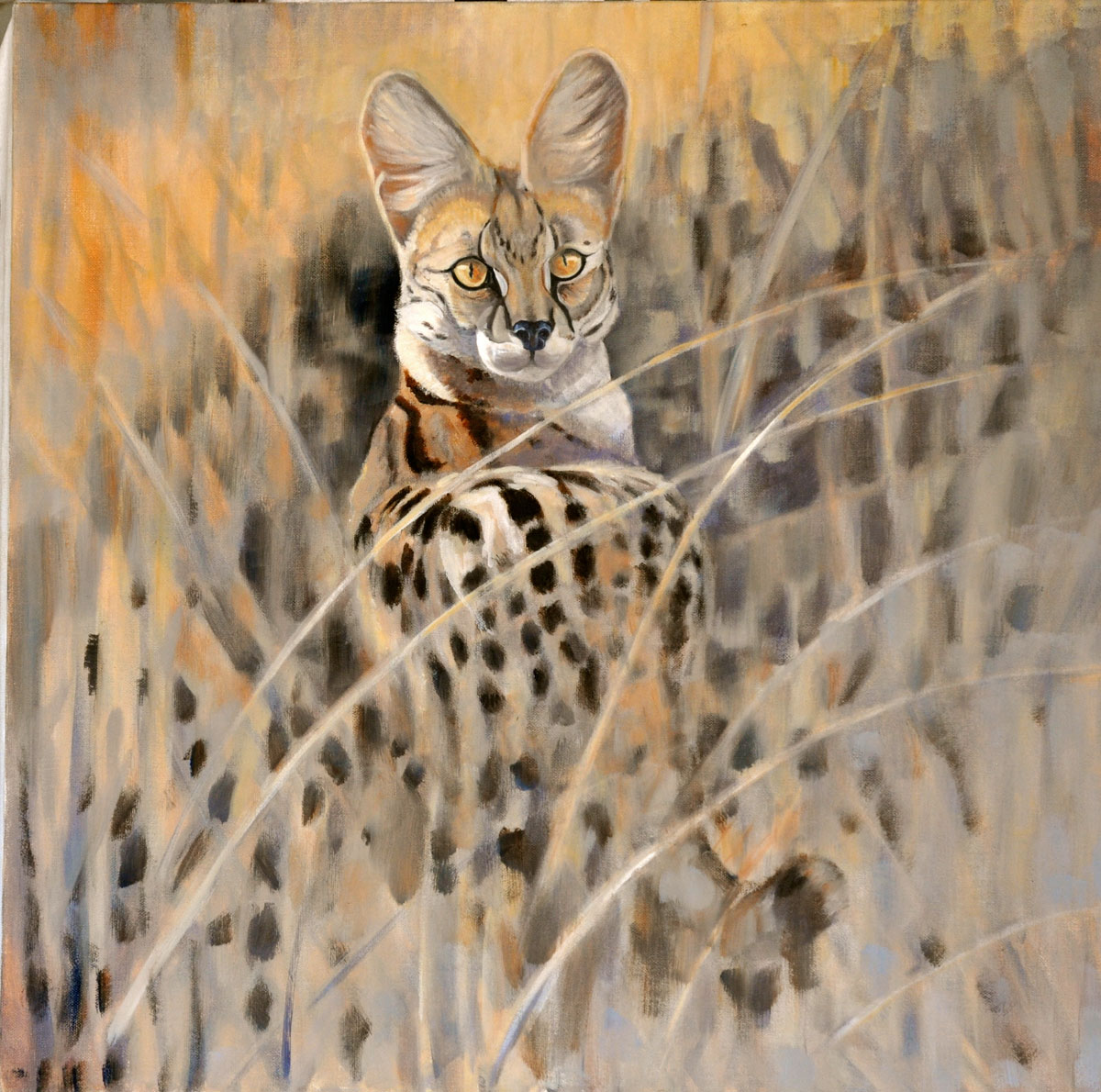 I am compiling countless little stories of my encounters and observations of the wonderful wildlife using photographs and sketches. And I have many oil paintings that are simmering away in my head, waiting for the right moment to appear on the canvas. These will be done randomly in between all the other projects. I will also be exhibiting and giving a talk in Vancouver at the Artist For Conservation exhibition at the end of September 2014.
I am compiling countless little stories of my encounters and observations of the wonderful wildlife using photographs and sketches. And I have many oil paintings that are simmering away in my head, waiting for the right moment to appear on the canvas. These will be done randomly in between all the other projects. I will also be exhibiting and giving a talk in Vancouver at the Artist For Conservation exhibition at the end of September 2014.
Here in Ruaha, a road network is yet to be developed, so huge areas remain unscathed by humans; there is a tangible atmosphere of peace and tranquillity here. When I am alone in the camp, I spend every waking moment sketching and painting, and with it so quiet, the animals come in very close – I feel like I might melt into the landscape, as somehow they seem to accept me as part of the scene.
READ MORE about Ruaha.
SEE MORE of Sue Stolger’s art.
To comment on this story: Login (or sign up) to our app here - it's a troll-free safe place 🙂.![]()




